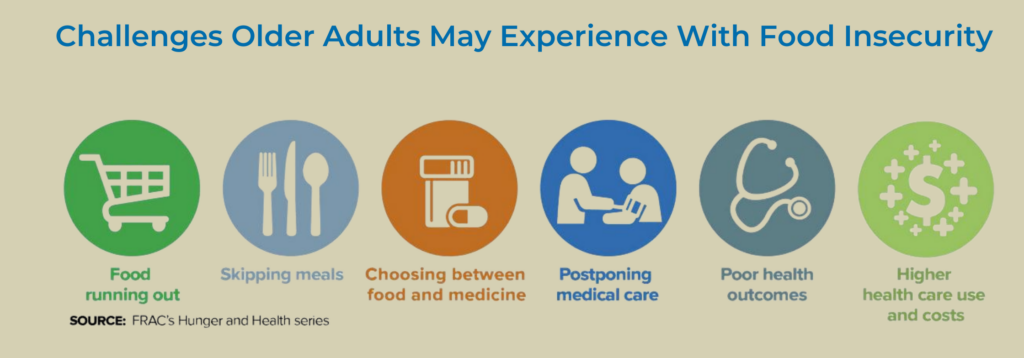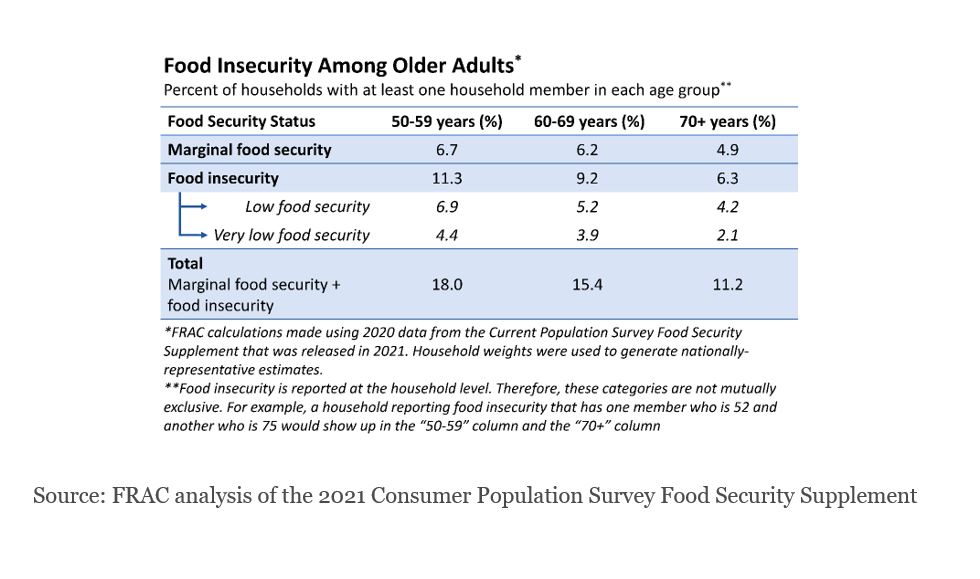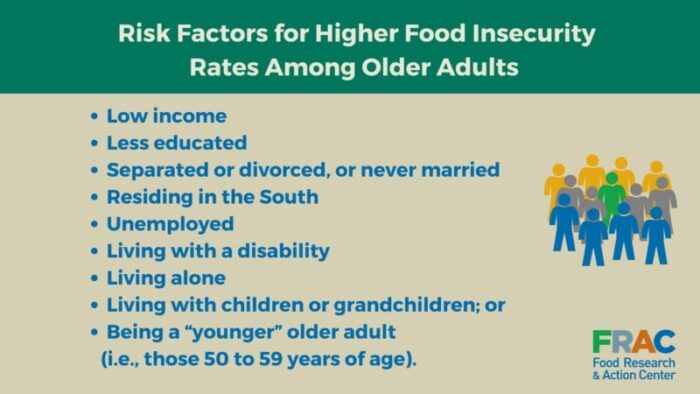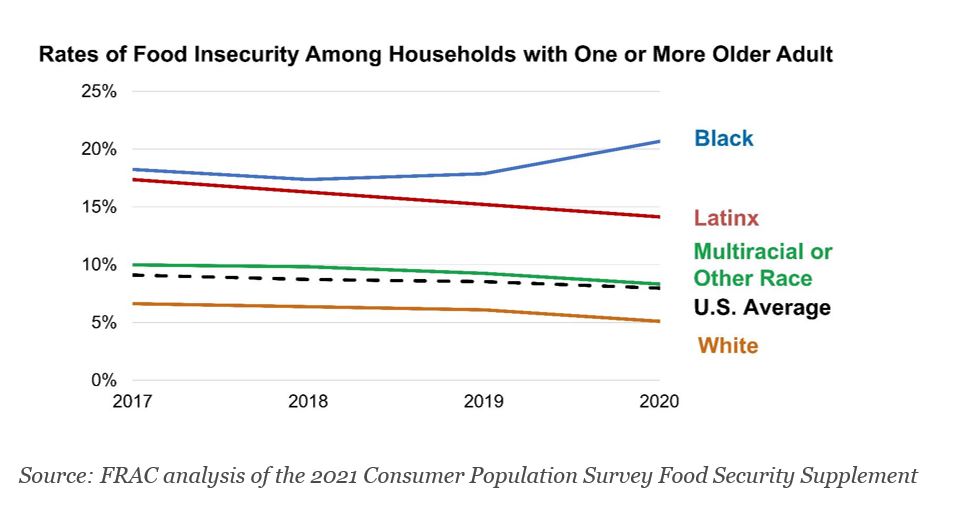May 12, 2022
In recognition of Older Americans Month, FRAC is releasing a two-part blog series on food insecurity among older adults.
Part 1 focuses on food insecurity’s prevalence among older adults as well as its disproportionate rates among Black and Latinx households and examines risk factors that make older adults more likely to experience food insecurity.
Part 2 will elevate the key role federal nutrition programs play in addressing food insecurity among older adults
May is Older Americans Month—an opportunity to celebrate the older adults in our lives as well as raise awareness of the struggles many older adults face with food insecurity.

By The Numbers
Millions of older adults are harmed by food insecurity. On average, from 2018–2020, 8.2 percent of the more than 47.6 million households with adults age 60 and older lacked reliable access to food.
- Location
No geographical community is immune from food insecurity among older adults; however, rates from 2018–2020 did vary across states, with the highest rate of food insecurity among households with older adults in Washington, D.C., at 15 percent, and the lowest rate in North Dakota, at 3.2 percent. - Age Cohorts
Food insecurity rates among older adults also vary across age cohorts. As shown in the table below, 11.3 percent of 50–59-year-olds lived in food-insecure households in 2020. The rates were lower—at 6.3 percent—for those 70 years of age and older. Part of the reason why food insecurity rates tend to decline with age is likely due to older people’s access to Social Security benefits.

- Marginal Food Insecurity
While these food insecurity rates are distressing, they would be even worse if the numbers included older adults with marginal food security, a less severe form of food insecurity. For example, when combining food insecurity and marginal food insecurity, the rate for 60–69 years old jumps to 15.4 percent; that is a 67 percent spike. Even marginal food security is associated with increased risk of metabolic disease among all adults, as well as with less healthful diets among older adults.
Food Insecurity Among Older Adults: Its Risk Factors
Certain groups of older adults are more at risk of food insecurity. Research shows that the following are risk factors for higher food insecurity rates among older adults:

A significant risk factor for food insecurity occurs when an older adult lives in a household with children under 18 years of age. Parents, grandparents, and other caregivers often try to protect children from food insecurity by sacrificing their own food and nutrition needs so that the children can eat. Health, financial, or family changes can seriously impact food security status as well.
The Disproportionate Impact of Food Insecurity Among Older Adults
Long before the COVID-19 pandemic, food insecurity rates disproportionately harmed Black and Latinx households with older adults compared to White households. These disproportionate rates of food insecurity are driven by underlying structural discrimination and other inequities. During COVID-19, the inequitable rates of food insecurity for Black households with older adults were further exacerbated, while gaps between Latino and White households remained fairly consistent. In 2020, Black households with older adults reported the highest rate of food insecurity (20.7 percent), while White households with older adults reported the lowest rate (5.1 percent).

Take Action
Connecting older adults to the Supplemental Nutrition Assistance Program (SNAP) and other nutrition programs is a winning strategy to address these alarming rates of food insecurity among older adults. SNAP provides monthly benefits to eligible older adults to purchase food. A considerable body of evidence shows that SNAP plays a role in improving food security, economic security, health, and dietary for older adults. However, one out of every two eligible older adults miss out on the benefits of SNAP.
Connecting older adults with SNAP and other nutrition programs will be discussed in greater detail in part two of this blog series.

